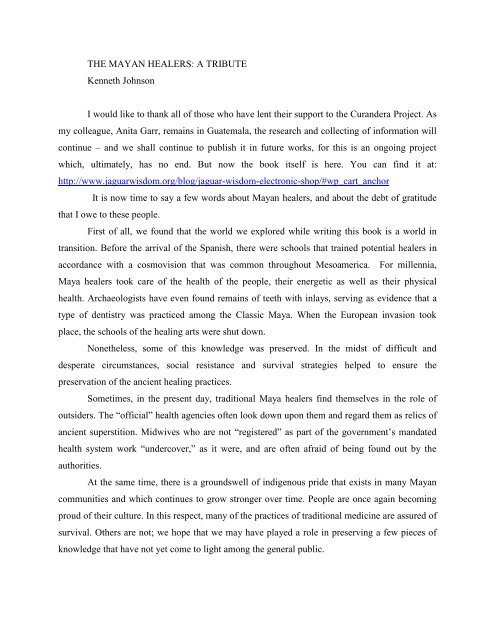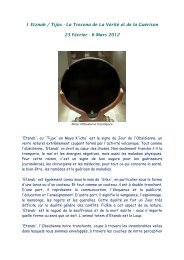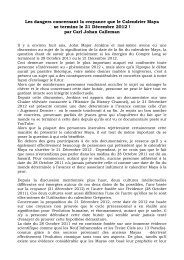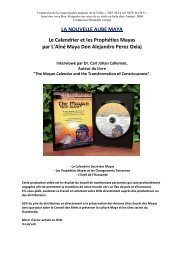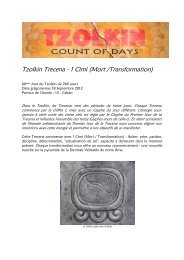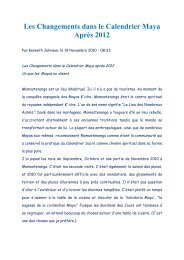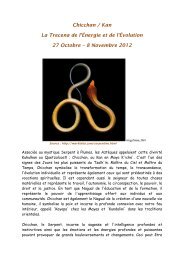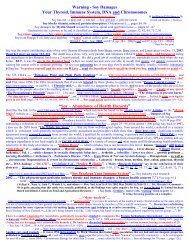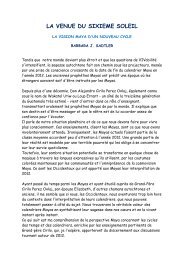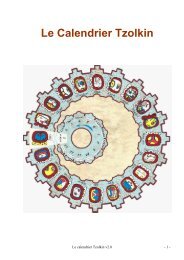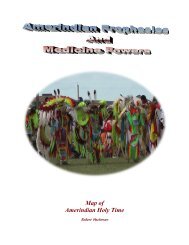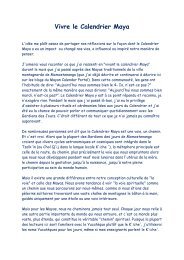THE MAYAN HEALERS: A TRIBUTE Kenneth ... - Mayan Majix
THE MAYAN HEALERS: A TRIBUTE Kenneth ... - Mayan Majix
THE MAYAN HEALERS: A TRIBUTE Kenneth ... - Mayan Majix
You also want an ePaper? Increase the reach of your titles
YUMPU automatically turns print PDFs into web optimized ePapers that Google loves.
<strong>THE</strong> <strong>MAYAN</strong> <strong>HEALERS</strong>: A <strong>TRIBUTE</strong><strong>Kenneth</strong> JohnsonI would like to thank all of those who have lent their support to the Curandera Project. Asmy colleague, Anita Garr, remains in Guatemala, the research and collecting of information willcontinue – and we shall continue to publish it in future works, for this is an ongoing projectwhich, ultimately, has no end. But now the book itself is here. You can find it at:http://www.jaguarwisdom.org/blog/jaguar-wisdom-electronic-shop/#wp_cart_anchorIt is now time to say a few words about <strong>Mayan</strong> healers, and about the debt of gratitudethat I owe to these people.First of all, we found that the world we explored while writing this book is a world intransition. Before the arrival of the Spanish, there were schools that trained potential healers inaccordance with a cosmovision that was common throughout Mesoamerica. For millennia,Maya healers took care of the health of the people, their energetic as well as their physicalhealth. Archaeologists have even found remains of teeth with inlays, serving as evidence that atype of dentistry was practiced among the Classic Maya. When the European invasion tookplace, the schools of the healing arts were shut down.Nonetheless, some of this knowledge was preserved. In the midst of difficult anddesperate circumstances, social resistance and survival strategies helped to ensure thepreservation of the ancient healing practices.Sometimes, in the present day, traditional Maya healers find themselves in the role ofoutsiders. The “official” health agencies often look down upon them and regard them as relics ofancient superstition. Midwives who are not “registered” as part of the government’s mandatedhealth system work “undercover,” as it were, and are often afraid of being found out by theauthorities.At the same time, there is a groundswell of indigenous pride that exists in many <strong>Mayan</strong>communities and which continues to grow stronger over time. People are once again becomingproud of their culture. In this respect, many of the practices of traditional medicine are assured ofsurvival. Others are not; we hope that we may have played a role in preserving a few pieces ofknowledge that have not yet come to light among the general public.
Our work was undertaken in two very different communities. San Cristobal de las Casasin Mexico is a large city with a substantial population of what Doña Crecencia calls “theurbanized Maya.” There are also a number of expatriates who frequent San Cristobal, andtherefore it is not unusual to encounter traditional healers who have also been influenced bycontemporary “New Age” philosophy. One of our sources, Don Lauro de la Cruz of the smalltown of San Juan Chamula, near San Cristobal, is an excellent example of this cultural fusion.His gift for healing manifested very early in his life, but his parents were Christian evangelistswho thought that their son’s gifts were tricks of the devil. Consequently, they gave him up to thecity’s most well known “devil worshipers,” the Tibetan Buddhist monks who have a colony inSan Cristobal. Sent to Dharamsala and trained there by Tibetans, Don Lauro is a cross-culturalblend of different world traditions.Momostenango, Guatemala, where the larger part of our research was conducted, is avery different place indeed. It has long been known as a bastion of <strong>Mayan</strong> traditionalism, a placewhere the rituals and ceremonies attendant on the ancient <strong>Mayan</strong> Calendar are still practiced, andwhere indigenous medicine is far more common – and available – than its Western counterpart.While some of our Momostecan sources are well traveled individuals, others have rarely been faraway from the Guatemalan highlands. It is not unusual to meet elderly people who speak noSpanish but only K’iche’ Maya – especially if they are from the villages rather than the town.Despite the fact that foreigners have a lively interest in <strong>Mayan</strong> culture, there are many long-timeexpatriates in Guatemala who have never even heard of Momostenango, despite the fact that itsreputation for “preserving the ancient ways” is well known among the Maya themselves.The traditional healer seldom charges a large amount of money. His or her clients areeconomically under-advantaged; they are the village Maya living in a Spanish-speaking world.The traditional healer also considers her or his healing skills to be a gift, whether from the spiritsor from the energies associated with one’s day sign, the <strong>Mayan</strong> Calendar day of one’s birth. Daysassociated with healing are Q’anil (Lamat), which is the day of herbalists; Ajpu (Ahau), which isa day for those born with the talent to resolve our issues with our ancestors and even past lives;Kan (Chicchan), the day for those with a gift for healing spiritual or psychological illnesses; andof course Kawoq (Cauac) and Tijax (Etznab), the days sacred to female and male healers ingeneral.
Healing is a gift, and a gift is not a gift unless it is freely given; the healer’s life is a lifeof community service. The healer receives a symbolic honorarium which is often left to thediscretion of the patient – in small communities, everyone already knows who you are and howmuch you can afford. I deeply remember the generosity of these healers, who were often calledaway from working in their cornfields or cooking the family dinner in order to attend to a patientwho could pay only in vegetables and perhaps with a chicken. And yet the healer gives equalcare and attention to all those in need, not just the wealthy.I want to thank the healers for allowing us into their homes. I can remember searchingbehind furniture and under beds, looking for a place to plug in my laptop and start taking notes.Sometimes I couldn’t find one; electricity can be sparse in the villages. Sometimes there wereseveral translators involved when we interviewed those who spoke only K’iche’. Throughout allthe bumbling and fumbling, the healers continued to be gracious, friendly and fully engaged.To the healers of the Maya world, therefore, we owe a great debt of gratitude. May theirpaths continue to survive and to flourish.


